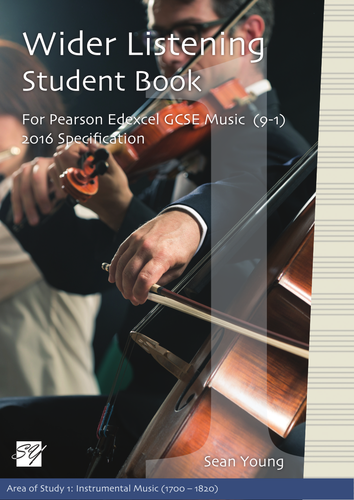


As part of the Edexcel specification for GCSE Music, students are expected to listen to, and be able to appraise, pieces of unfamiliar music that are linked to the set works. As part of this requirement, and to facilitate the breadth of knowledge required to place each of the 8 set works within their wider context, the exam board has suggested a series of pieces of music that may be studied in addition to the set works. By studying these wider listening pieces, students will gain more experience of unfamiliar music, and will further their understanding of key stylistic features of the style and genre that each of the set works represents.
This book provides an analysis of two of these wider listening pieces, both of which relate to Area of Study 1: Instrumental Music (1700-1820). They are:
– Vivaldi, ‘Winter’ from The Four Seasons, movement III; and
– Mozart, Piano Sonata in C major K. 545, first movement.
Each analysis is broken down into the key elements of music, with follow-up student questions to stimulate comparison with the set works after each section.
Although the wider listening pieces are not compulsory study, and do not need to be studied in as much detail as the set works, this text book will help students in broadening their knowledge of the context and styles of each of the set works, and will make determining similarities and differences in the unfamiliar listening question more approachable.
The book is provided as full colour PDF file, in a presentable format with questions and keywords throughout.
A sample double-page spread is available to preview from the files list.
If you purchase this resource, please leave some feedback!
This book provides an analysis of two of these wider listening pieces, both of which relate to Area of Study 1: Instrumental Music (1700-1820). They are:
– Vivaldi, ‘Winter’ from The Four Seasons, movement III; and
– Mozart, Piano Sonata in C major K. 545, first movement.
Each analysis is broken down into the key elements of music, with follow-up student questions to stimulate comparison with the set works after each section.
Although the wider listening pieces are not compulsory study, and do not need to be studied in as much detail as the set works, this text book will help students in broadening their knowledge of the context and styles of each of the set works, and will make determining similarities and differences in the unfamiliar listening question more approachable.
The book is provided as full colour PDF file, in a presentable format with questions and keywords throughout.
A sample double-page spread is available to preview from the files list.
If you purchase this resource, please leave some feedback!
Something went wrong, please try again later.
This is really useful - would be great for the other areas of study too if possible??
Report this resourceto let us know if it violates our terms and conditions.
Our customer service team will review your report and will be in touch.
£4.99